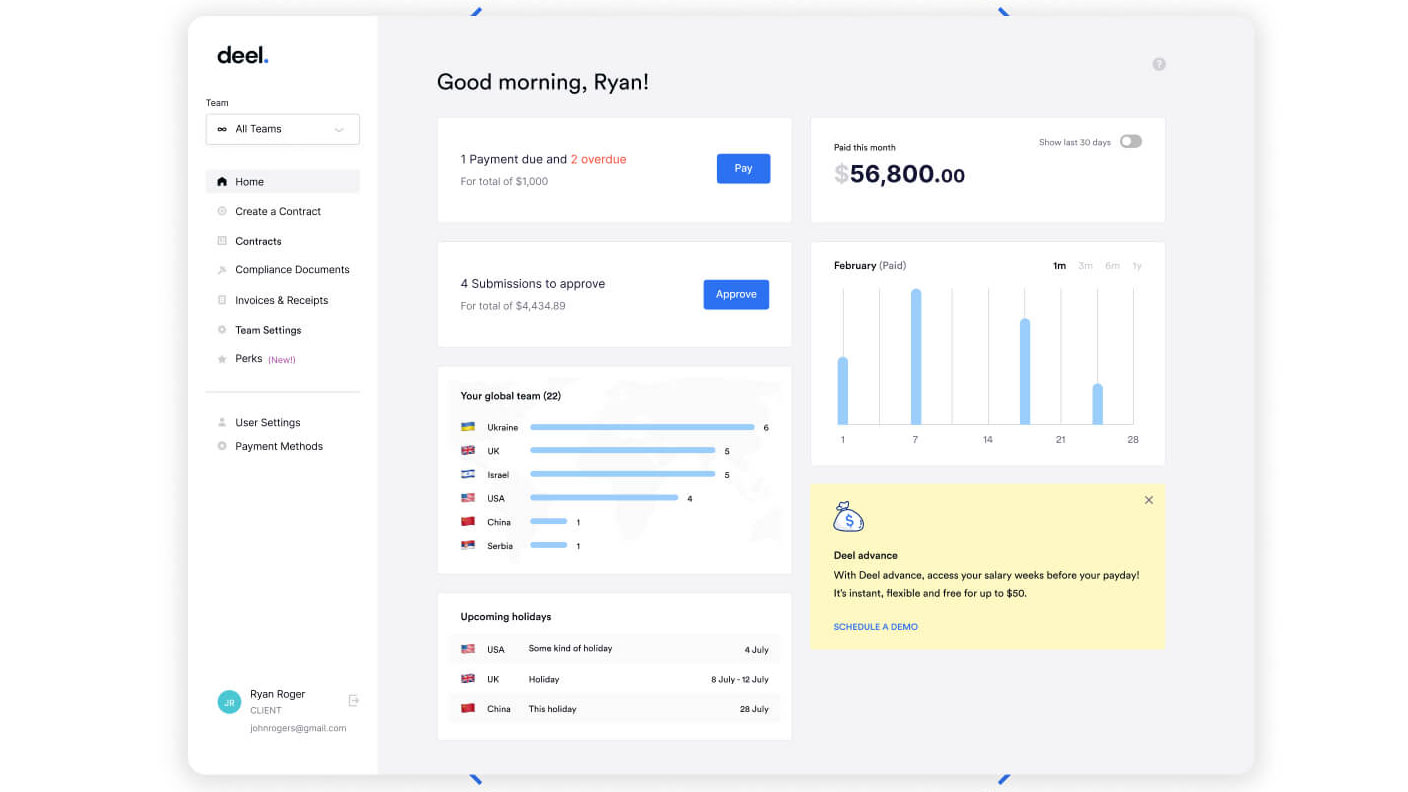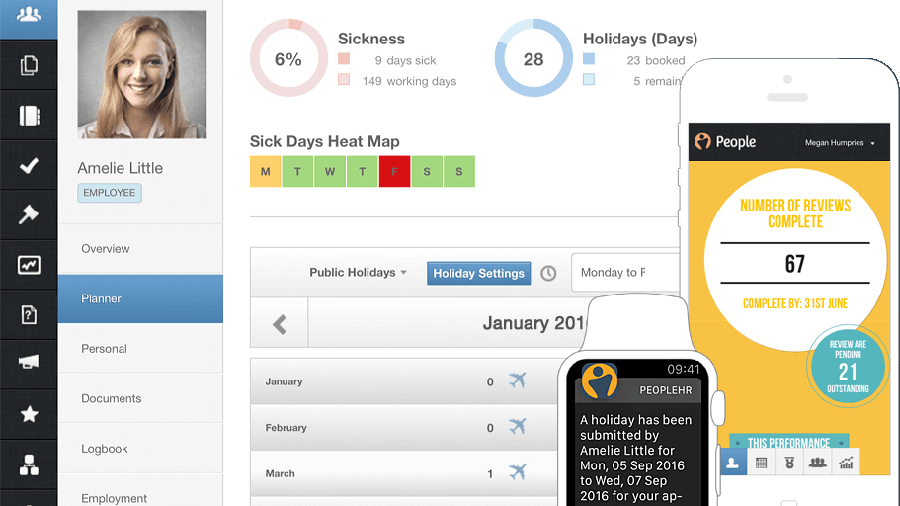7 reasons why you should use a HR software package in your business
Fulfil the core needs of your business

Human resources (HR) is a core function of every business, regardless of size. Most companies have at least one designated staff for human resource management functions, and big companies have entire departments dedicated to this task. HR departments help coordinate employees across different company branches to achieve common goals, and their work would be very challenging without software.
Imagine if HR staff in a company had to do everything manually: create and sort documents, manage payroll, coordinate vacations and sick leaves, etc. It will be cumbersome. That’s why you can find endless HR software vendors offering tools to streamline the work.
This article will list the seven primary reasons to use an HR software package in your business.

TechRadar created this content as part of a paid partnership with Employment Hero. The contents of this article are entirely independent and solely reflect the editorial opinion of TechRadar.
1. Reduced Errors
The core benefit of HR software tools is to reduce the rate of errors in human management tasks for your business. HR software tools automate most calculations, leaving humans to focus on the complex and sentimental parts computers can not handle.
Let’s say your company has 100 staff. Imagine your HR team were to calculate payroll for each staff at the end of a monthly period, accounting for individual situations like sick leave, paid vacation period, time-in and time-out, etc. Mistakes will likely occur. But, payroll software baked into an HR solution can automate the calculations. It’ll gather data on each employee and calculate the correct pay at the end of the month. The finance or HR lead just needs to sign off on it.
Another example involves calculating the required payroll taxes. If HR teams were to do this by hand, they’d likely make mistakes that can cause serious legal consequences. Instead, a software tool can automate the task and ensure your company avoids problems with the taxman.
Humans are better than computers in many ways, but not in the ability to perform routine calculations. HR software tools reduce the error rate involved in HR-related tasks thanks to their computational power.
Sign up to the TechRadar Pro newsletter to get all the top news, opinion, features and guidance your business needs to succeed!
2. Regulatory compliance
Compliance is a big part of human resource management. Different jurisdictions have a hodgepodge of laws concerning employers of labor, and it’s often challenging to keep up with them. However, HR software tools help you comply with these regulations, as they’re already encoded with the software during the development cycle.
For example, Deel, a prominent HR/payroll software provider, makes it easy for companies to comply with tax and employment laws in over 150 counties. It enables companies to compensate global employees according to local laws, e.g., by offering localized healthcare benefits and creating contracts according to local legal templates. Companies can also help employees apply for visas and work permits via Deel, serving as a conduit with local immigration authorities.
HR software tools can save you the need to employ a designated HR compliance department and cut down on your consulting bills with expensive tax lawyers. It doesn’t do all the job, but it greatly helps companies comply with the patchwork of global HR-related regulations. You can spend a few hundred dollars on a software package instead of thousands of dollars on human personnel to do the same work.

3. Attendance monitoring
HR software allows businesses to monitor employee attendance in a friendly way. Unfortunately, many companies suffer from timecard fraud, which costs them time and money, and it’s more likely to happen with manual timekeeping.
Virtually no one uses physical attendance sheets again because software can do the job more accurately. Your HR software package can monitor employee time-in and time-outs for employees. Workers will swipe their cards on a designated machine, and the software automatically logs the time they clocked in. They can swipe their cards for breaks on the same machine, and the software logs it accurately. When it’s time-out, they swipe the cards again, and the machine keeps the timing accurately.
The time-ins and time-outs from the designated machine can be automatically exported to a spreadsheet. You can send the spreadsheet to your payroll software to calculate employee compensation accurately. Sometimes, a company uses the same platform for attendance monitoring and payroll, so the process is automatic.
HR software packages allow you to monitor employee attendance non-invasively and ensure both parties of the employment contract fulfill their ends of the deal.
4. Employee retention
Companies want to retain employees and have as low turnover rates as possible. This doesn’t happen easily: it comes from the company valuing employees and managing them effectively. HR software tools help with employee management and, in turn, retention.
Employee retention starts from a company’s onboarding policies. What does a new hire see when they begin their job? Do they feel welcomed by the staff and given good guidance about their new workplace, or do they feel ignored? HR software tools can streamline the onboarding process. It’ll take care of welcoming new employees and introducing them to the core aspects of your organization. It’ll connect them to other employees at the company, letting them know where to voice any concerns they have.
HR tools allow companies to conduct widespread corporate surveys, wherein employees can provide candid opinions publicly or anonymously. When employees can be honest with the management and voice any concerns they have, staff morale improves and, in turn, retention.
HR tools foster harmony between a company and its leadership and also foster collaboration between different levels of a company, improving employee retention and giving the company a smoother workflow.

5. Metrics/analysis
Companies need accurate data about their organizational processes, and there’s no better place to get it than an HR platform. For instance, HR teams can create surveys for employees to evaluate their satisfaction with the company. From the survey data, the HR team can easily identify where the company needs improvement and pass the information to the management.
Organizations trying to cut costs can track vital metrics from their HR platforms, such as time to hire and cost per new hire, rate of voluntary and involuntary turnovers, the time it takes to hire a replacement, etc. Based on this data, they can optimize costs and ensure the company spends money wisely.
Analytics is increasingly becoming a core focus of HR software suites. Many HR tools allow business owners to generate insightful reports about their organization. For instance, at the click of a button, you can generate a detailed report about the latest round of employee performance reviews.
Many HR systems have extensive third-party integration libraries, allowing you to import data from external platforms to analyze. For example, you can import payroll data from another tool into your HR system to accurately calculate compensation.
6. Security
Security is paramount in every organization, and HR tools help in this aspect. It helps companies to teach and enforce security policies to prevent significant damage. Most HR systems have access control, allowing companies to oversee who has access to what data or not. For instance, HR staff can access sensitive employee data such as pay and performance reviews, while other employees can not. Managers and C-suite might have greater data access than lower levels: you can control that from the HR system.
It’s way more secure to handle HR processes with software than with physical paper. People can easily breach physical storage rooms and steal data undetected, but not with software. The good news is that HR systems have advanced security features to prevent breaches. You can enforce two-factor authentication, requiring at least two modes of identification before granting access to an employee’s account (the first is the correct username and password, and the second is a one-time PIN sent to their phone or email).
HR systems also use advanced encryption protocols to prevent malicious actors from intercepting data in transit. An example is the AES-256 encryption protocol, which uses 256-bit keys to encrypt data, making it impenetrable to hackers.
HR systems also keep logs of people who access any data. This way, it becomes easy to trace the source of a potential breach and make adjustments to prevent it from repeating.
7. Efficient communication
HR software tools foster effective communication and collaboration within an organization, especially large ones. Imagine a company with 1,000+ employees and many siloed departments. It will normally be difficult to pass information between different departments and staff. However, HR systems provide a centralized repository to store and pass information across the organization.
Executives can make company-wide announcements from the HR system. Employees can create and share documents with colleagues, tagging them by name or email address. Most importantly, the HR system logs every piece of internal communication, and people can easily retrieve any bit of information they might have forgotten.
New employees can always check the central HR repository for crucial information about your organization, e.g., organizational charts, management reporting chains, etc.

Conclusion
There are endless benefits of using HR software. But we’ve explained the seven main ones to note. For more information, you can see our list of the best HR software to manage employees in 2023.
Stefan has always been a lover of tech. He graduated with an MSc in geological engineering but soon discovered he had a knack for writing instead. So he decided to combine his newfound and life-long passions to become a technology writer. As a freelance content writer, Stefan can break down complex technological topics, making them easily digestible for the lay audience.
